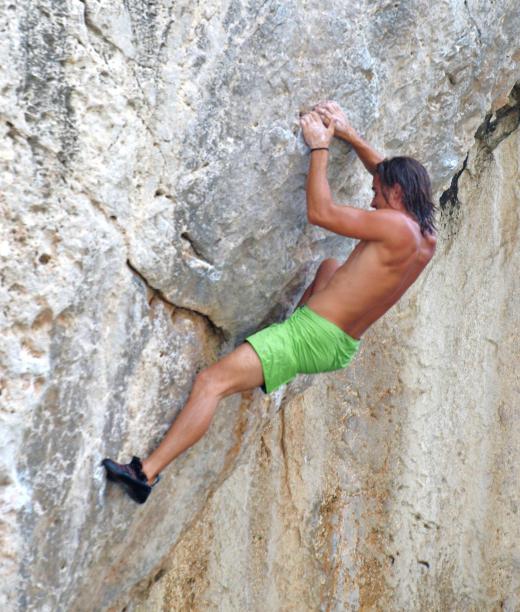How do Glaciers Shape the Land?
 Michael Anissimov
Michael Anissimov
About 19,000 years ago, the Earth was in the midst of a massive Ice Age, during which continental glaciers existed as far south as Wisconsin, most of England and Ireland, southern Germany, and most of present-day Russia. Canada, Norway, Sweden, Finland, and most of Russia were uninhabitable, completely covered in ice. In other parts of the world, such as California, alpine glaciers were much larger and more pervasive, carving numerous features into the mountains which remain today.
A glacier forms when snow falls and fails to melt, piling up over the centuries into slabs of ice between a few dozen feet and two miles thick. These bear tremendous weight, crushing the land beneath them as they slowly flow downhill. They carve out pathways known as glacial valleys. Alpine glaciers coalesce in areas where they can flow downhill easily, creating ribbed patterns between glacial "rivers" (cirques) and "hills" between them (aretes). These glacial features remain thousands or millions of years after their initial formation.

Many of the amazing features in places like Yosemite Valley have been formed by glaciers. These areas have large stretches of exposed granite, formed when ice scraped away overlying rock layers to reveal the underlying bedrock. Many of these granite surfaces lack true soils. Trees have to grow in small cracks between the rocks. These granite surfaces are considered ideal for rock climbing, and are visited by hundreds of thousands of people each year for just that purpose. The natural wonder of surrounding glacial valleys provides an excellent backdrop for a challenging climb.

The coasts of many northern countries, especially those immediately adjacent to the Arctic, display fjord-covered landscapes, which are caused by ancient glaciers. Countries with fjord-covered coasts include Canada, Norway, Iceland, and Greenland. Norway is among the most famous, with thousands of beautiful fjords. The world's longest fjord, Scorseby Sund, stretches for 217 miles (350 km). It is found on the eastern coast of Greenland.
AS FEATURED ON:
AS FEATURED ON:













Discussion Comments
This is really helping me on my homework about the different things that reshape the earth.
Glacial erosion has touched some of the most remote corners of the earth. I like to hike and some of my buddies like to rock climb, so I love pictures of mountains. One of the best examples of the power of glaciers can be seen on the Western Cwm, which is on the west side of Mount Everest. The Western Cwm is a deep cirque carved out by a cirque glacier that flanks the entire western side of Mount Everest. The deep cirque carved out by the glacier has left the large jagged aretes that run down mountain from the summit of Everest.
@ FrameMaker- That sounds like an amazing adventure. I once took a photo trip to Switzerland’s Lauterbrunnen Valley to visit a town that sits in the bottom of an awe-inspiring glacial valley. The glacier that created the valley is no longer there, but the remnants of the glacier are still ominously present. The glacier erosion scoured out sheer cliff faces so tall that they cast shadows over the valley during part of the day. It was an incredible trip.
Glaciers form some of the most beautiful rock formations and features I have ever seen. It is amazing how powerful these sheets of ice are. It is also amazing how glaciers act like other fluid systems. They are very complex parts of the hydrologic cycle, and they are awesome when viewed in person.
I have never seen Alaska's great glaciers, but I have seen some of the glaciers in the Swiss Alps. My grandmother lives in Switzerland, and the last time I was there, she took us on a rail tour of the Swiss Alps. The tour was on this beautiful train called the Matterhorn Gotthard Bahn, and it was absolutely amazing. The train travels through tunnels, over bridges, and over a pass in the Alps. On the tour, I saw some of the most picturesque scenery imaginable, and I saw a few of the Alps great glaciers.
Post your comments